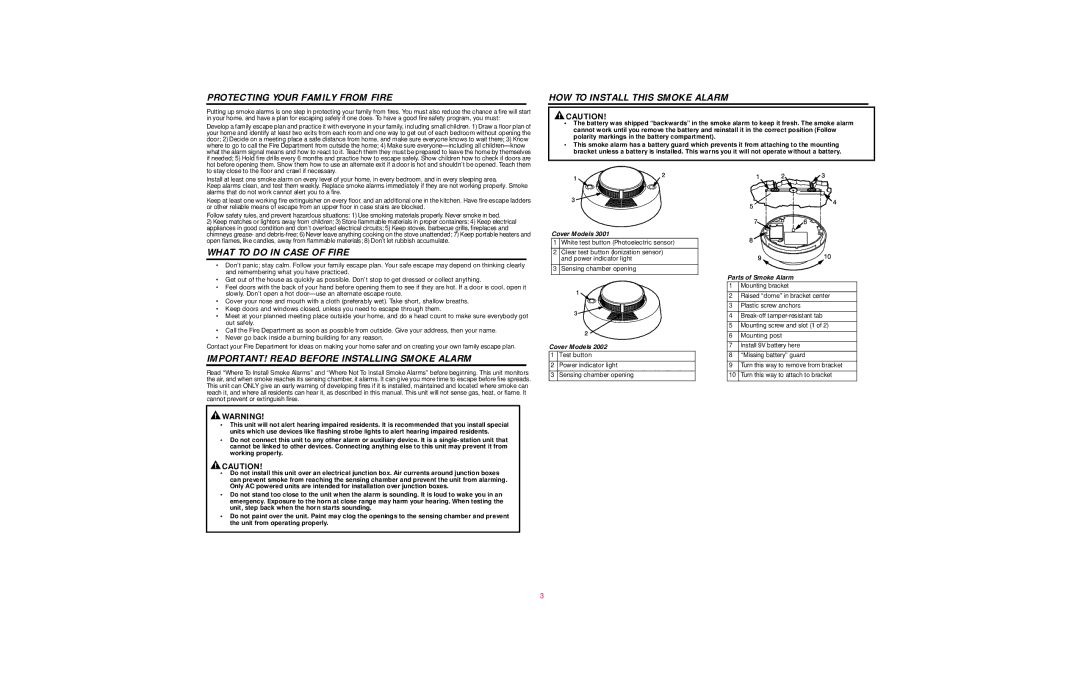3001, 2002 specifications
BRK Electronics, a well-known name in the field of smoke alarms, carbon monoxide detectors, and home safety products, introduced the models 2002 and 3001, which have set new standards in fire safety technology. These models are designed to provide advanced protection for homes and commercial spaces, combining critical safety features with user-friendly operation.The BRK 2002 model is primarily recognized for its reliable smoke detection capabilities. It is equipped with a photoelectric sensor, which is highly effective in identifying smoldering fires that produce a lot of smoke but little flame. This technology minimizes false alarms triggered by cooking smoke or steam, providing users with a more accurate and dependable warning system. The 2002 model features a sleek, low-profile design, making it suitable for various home aesthetics. Additionally, it comes with a hush feature, allowing users to silence the alarm temporarily during non-threatening situations.
In contrast, the BRK 3001 model incorporates both smoke and carbon monoxide detection capabilities, making it a dual-purpose unit for comprehensive safety. This model employs both photoelectric and ionization sensors, which together enhance its ability to detect a broader range of fire types. The carbon monoxide detection feature is particularly essential, as CO is a silent yet deadly gas that can accumulate from malfunctioning appliances or car exhaust. The 3001 model is designed to be interconnected with other alarms, providing a cohesive safety system throughout the home.
Another standout feature of both models is their battery backup systems, ensuring functionality even during power outages. Both alarms emit a distinct chirping sound when the battery is low, prompting users to replace it in a timely manner. The installation process for both models is straightforward, typically requiring a standard mounting bracket and basic tools.
In summary, BRK Electronics 2002 and 3001 models exemplify the fusion of advanced technology and user protection. Their respective features provide peace of mind for users, safeguarding against the threats of smoke and carbon monoxide. With their reliability, ease of use, and critical safety functions, these smoke and CO detectors represent a significant advancement in home safety solutions. The choice between the 2002 and 3001 depends on specific needs, with both options delivering exceptional performance and protection.

